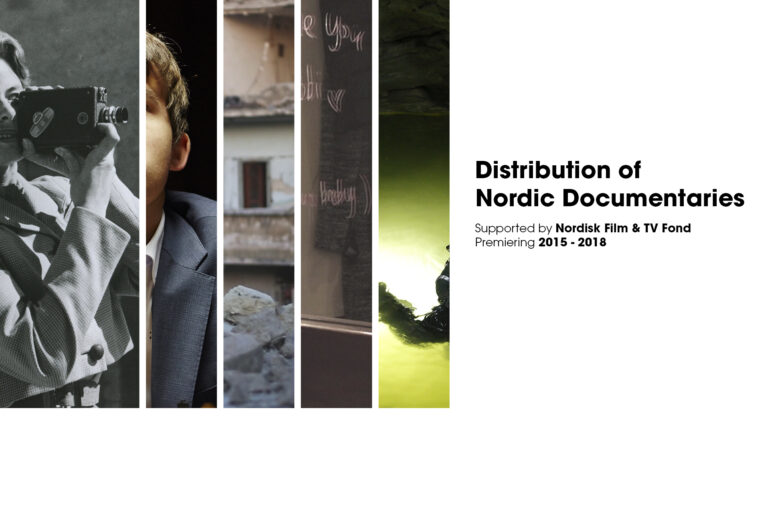The report is based on supported films that premiered between 2015-2018, aims at providing a pre-pandemic overview of the documentary market in the Nordics.
The report “Distribution of Nordic Documentaries supported by Nordisk Film & TV Fond, premiering 2015-2018” was written by Documentary Consultant Jan Daae, with Nordisk Film & TV Fond’s Senior Documentary Advisor Karolina Lidin, serving as editor.
TO DOWNLOAD THE REPORT: CLICK HERE.
Lise Løwholm, the Fund’s Senior Advisor Strategy and Administration said: “The report is an extraordinary deep dive into the distribution landscape of Nordic documentary films, which gives both the Fund and the industry invaluable insight for future strategies. It also strengthens the overall goal of our documentary themed-year 2021.”
Lidin describes the report as “a comprehensive, facts-and-figures presentation of the financing and distribution reality for high-end creative documentaries, pre-pandemic.”
“For Nordisk Film & TV Fond, it has obvious relevance, given that financing and distribution make up a big part of assessment criteria according to our financing policy. So, it is important for us to keep abreast of the overall results of the films we support, and develop our assessment practice in accordance with shifts in the industry," she explains. “Having such a valuable collection of data on hand, it would only make sense to share it with the documentary community at large. The more we know, the better we can navigate current and future challenges,” she said.
The data collected by Jan Daae, relates to 62 Nordic documentaries backed by the Fund, which premiered between 2015 to 2018 across different platforms. The seven main sections of the report follow the films’ traditional windowing, from financing though festival exposure, theatrical release, broadcasting (linear and catch-up TV), VOD, educational/special events, to international sales.
Daae points out that “the report aims to collect an overall view of the distribution of the Nordic documentaries, rather than tracking and comparing specific titles across platforms and/or platform trends on a year by year basis. The data is too small for such an approach. We have mapped the state of affairs for the 62 documentaries in the survey, up until the pandemic. Follow-up surveys can hopefully identify trends in volumes over a greater timespan.”
Looking at the various distribution windows and cross-border results, he said: “In an overall perspective, a lot of the Nordic documentaries in this survey travelled to other Nordic countries on several platforms. But only a handful tended to cross borders theatrically in each country. In terms of cinema experiences, the crossing of borders is far more common at film and documentary festivals.”
Broadcasters Rule
Daae underlined the prime position of broadcasters where “viewers are counted in millions” rather than thousands in cinemas, and the traditional strong support from Nordic public broadcasters. “DR, YLE, NRK and SVT all supported 40+ of the 62 documentaries,” he notes. Commenting on broadcasters’ input, he said their involvement was more in co-productions rather acquisitions, with some buying only for their online platforms, at a modest level.
The documentary analyst also stressed the stronger commitment from commercial broadcasters such as TV 2 Denmark and TV 2 Norway that ordered the Top 3 documentaries in their respective countries.
Regarding VOD platforms, Daae says they "continue to be a dark horse in the market.“ “The majority of the 62 documentaries released on a VOD platform in the Nordics were available on TVOD or local SVOD platforms. Though the documentaries in the survey are high-end creative documentaries, the major SVOD platforms picked up only two of the films according to our sources of information,” he said.
Asked if through his research, he was able to spot clear signs of shifts in revenue streams to rights holders, Daae said: “The qualitative feedback we got from both producers and sales agents is that it is becoming more difficult to finance high budget documentaries in today’s landscape. We see a tendency of a high number of financiers on each documentary and an increase of so-called alternative funding, non-industry specific. “
Daae reported a “similar trend in international sales of finished films, where buyers tend to lower their fees while still demanding increasingly more rights. In that sense, the revenue streams are diminishing for the rights holders,” he acknowledged.
“In an overall perspective, a lot of the Nordic documentaries in this survey travelled to other Nordic countries on several platforms. But only a handful tended to cross borders theatrically in each country. In terms of cinema experiences, the crossing of borders is far more common at film and documentary festivals.”
Looking at lessons to be learnt from the findings, Daae said: “One lesson, which early on became a mantra through working with this report, is that the success of a documentary is very individual. The number of films able to perform extraordinary on all platforms are small and it is not a success you can plan or conceptualise in production. Timing is important and trends can change during the realisation of a film project. Focus on making the best version of the documentary tailored towards the target audience and motivation for the film,” he stated.
